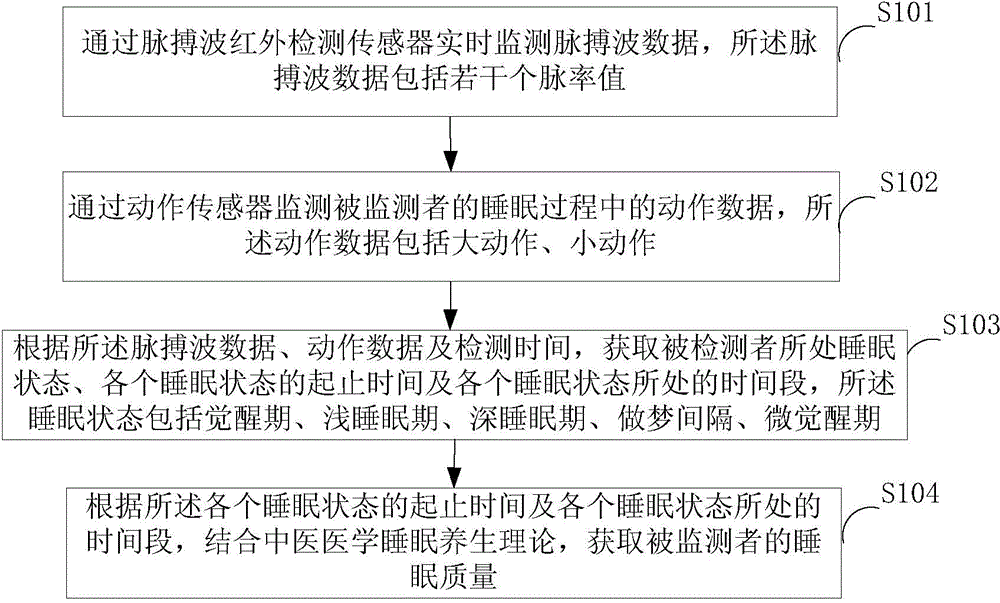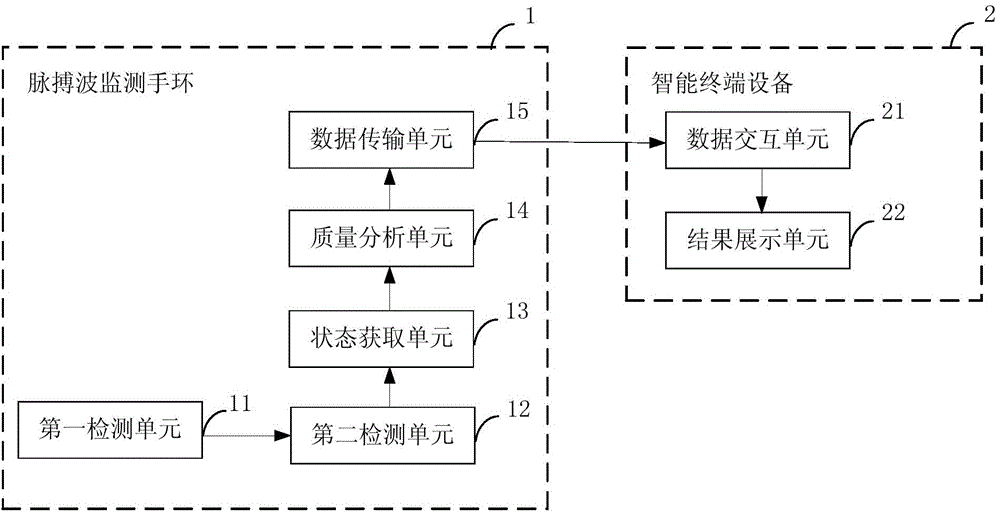Method and system for monitoring sleep quality based on pulse wave data
A technology for sleep quality and data monitoring, applied in diagnostic recording/measurement, measurement of pulse rate/heart rate, medical science, etc., can solve problems affecting sleep quality, poor signal collection effect, stimulation of human skin, etc., to achieve collection efficiency High, accurate analysis, accurate data effect
- Summary
- Abstract
- Description
- Claims
- Application Information
AI Technical Summary
Problems solved by technology
Method used
Image
Examples
Embodiment 1
[0026] figure 1 The implementation flow of the method for monitoring sleep quality based on pulse wave data provided by Embodiment 1 of the present invention is shown, and the pulse wave monitoring wristband is used as the execution subject. The details are as follows:
[0027] It should be noted that the sleep regimen theory of traditional Chinese medicine includes the detoxification time of various organs during the human sleep process, such as figure 2 As shown, the detoxification of each organ corresponds to different time periods.
[0028] In step S101, the pulse wave data is monitored in real time by the pulse wave infrared detection sensor, and the pulse wave data includes several pulse rate values.
[0029] In this embodiment, the pulse wave data is a human hand pulse wave signal collected by a pulse wave infrared detection sensor.
[0030] In step S102, the motion data of the monitored person during sleep is monitored by the motion sensor, and the motion data inclu...
Embodiment 2
[0052] image 3 A specific structural block diagram of a system for monitoring sleep quality based on pulse wave data provided by Embodiment 2 of the present invention is shown. For ease of description, only parts related to the embodiment of the present invention are shown. In this embodiment, the system for monitoring sleep quality based on pulse wave data includes: a pulse wave monitoring bracelet 1 and an intelligent terminal device 2, both of which communicate through a wireless network. Such as Figure 4 As shown, the pulse wave monitoring bracelet 1 is composed of a gravity sensor, a pulse rate sensor, a body surface temperature sensor, a storage module, a communication module and an MCU module.
[0053] Wherein, the pulse wave monitoring bracelet 1 includes:
[0054] The first detection unit 11 is used to monitor the pulse wave data in real time through the pulse wave infrared detection sensor, and the pulse wave data includes several pulse rate values;
[0055] The...
PUM
 Login to View More
Login to View More Abstract
Description
Claims
Application Information
 Login to View More
Login to View More - R&D
- Intellectual Property
- Life Sciences
- Materials
- Tech Scout
- Unparalleled Data Quality
- Higher Quality Content
- 60% Fewer Hallucinations
Browse by: Latest US Patents, China's latest patents, Technical Efficacy Thesaurus, Application Domain, Technology Topic, Popular Technical Reports.
© 2025 PatSnap. All rights reserved.Legal|Privacy policy|Modern Slavery Act Transparency Statement|Sitemap|About US| Contact US: help@patsnap.com



